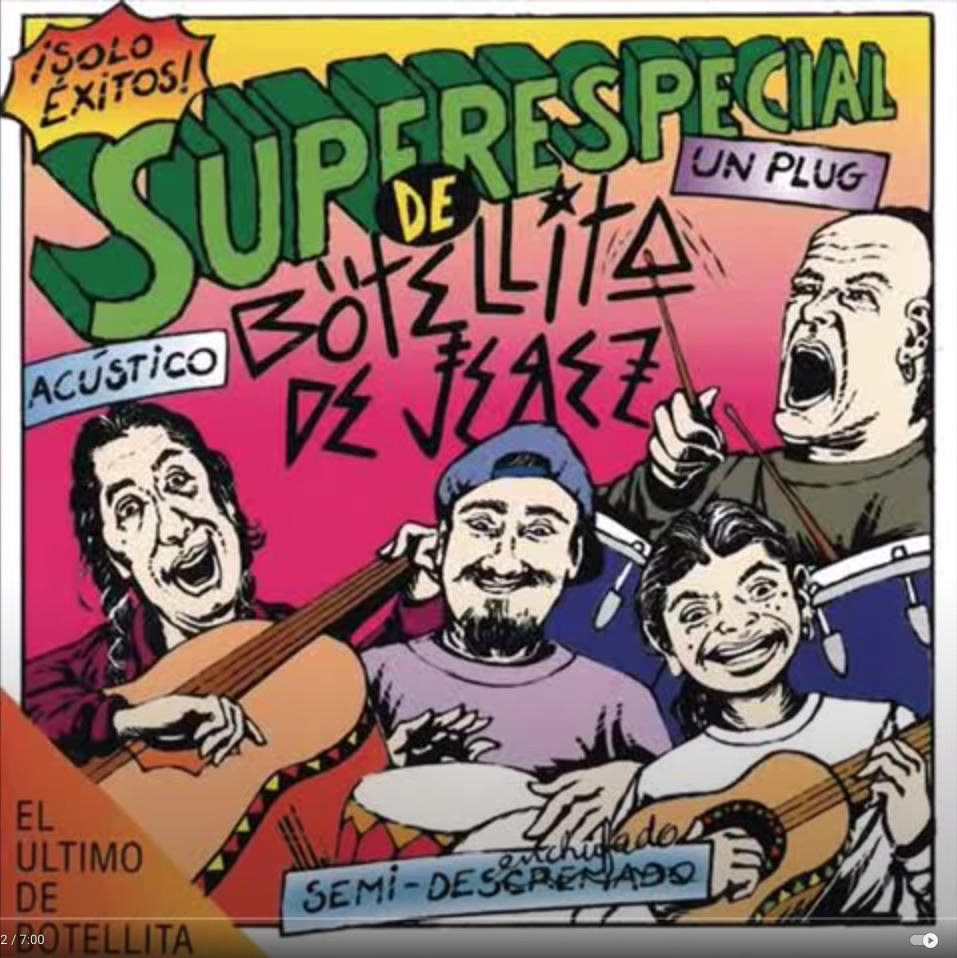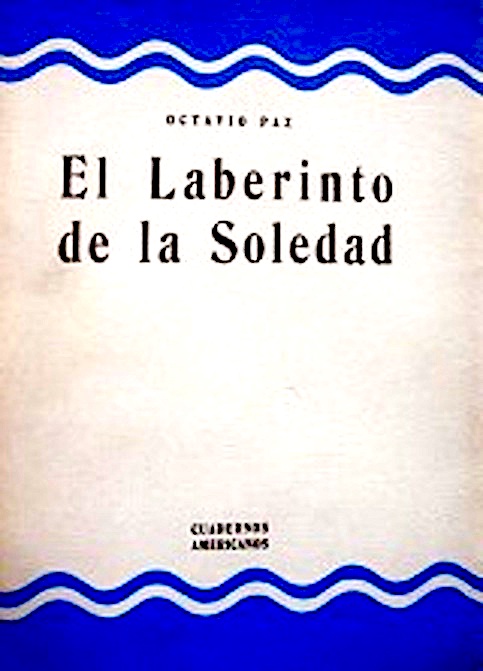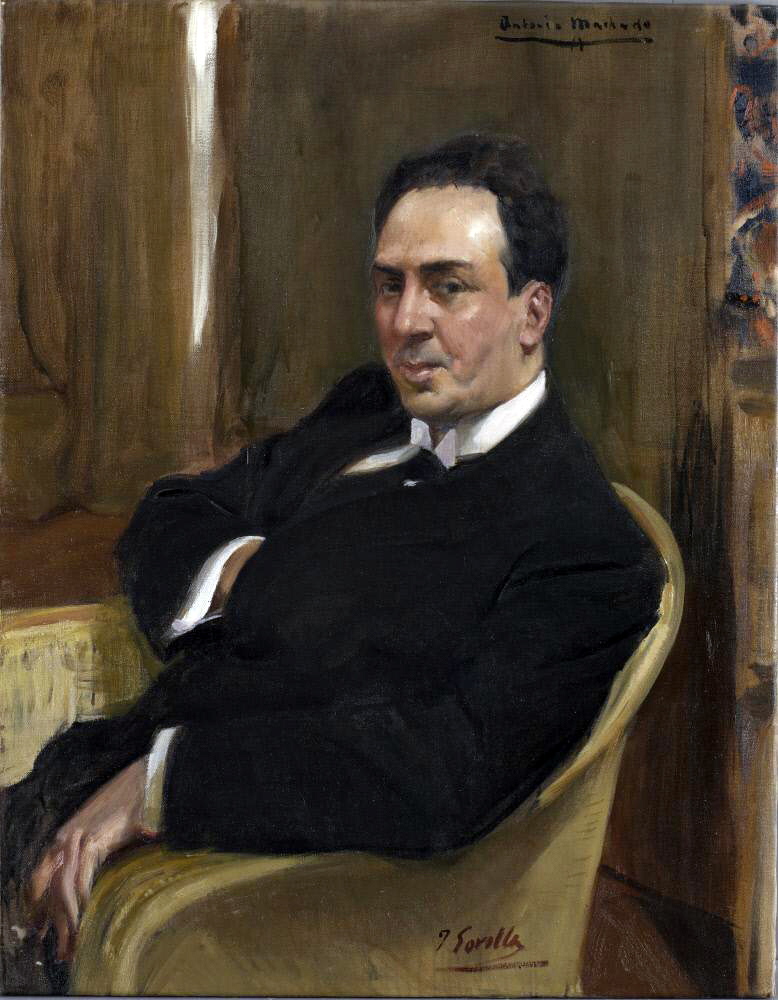


オクタビオ・パス『孤独の迷路』読解
El laberinto de
la soledad, por
Octavio Paz, 1914-1998.
見られない場合はこちらをリンク→ Documental «El
laberinto de Octavio
Paz», by Instituto
Cervantes.
『孤 独の迷宮』英訳:The Labyrinth of Solitude, El laberinto de la soledad, por Octavio Paz, 1914-1998.(→「孤独の迷路00」)
| El laberinto de la soledad es un libro publicado en 1950 por el escritor mexicano Octavio Paz (ganador del Premio Nobel de Literatura en 1990). Es el reflejo de las preocupaciones de su autor en torno al mexicano, su psicología y su moralidad. En esta obra, busca cuáles son los orígenes y las causas del comportamiento del mexicano tanto individualmente como en lo colectivo, así como su forma de afrontar y desafiar al mundo; búsqueda que desemboca en el inconsciente como origen y causa de su conducta. El propósito de esta obra es encontrar una identidad para los mexicanos; el argumento central del autor es que los acontecimientos históricos tienen una influencia significativa en los sentimientos de pesimismo e impotencia que predominan en la mentalidad mexicana. | いわゆる「他者」なるものは存在しない。すなわち、これは理性的な信仰 であり、人間の理性の有する、癒しがたい信念である。あたかも、すべてのものが遂に は必然的、且つ絶対的に「全一同一」であらねばならないかのように、同一性即現実性という等式が成り立つ。しかし、「他者」なるものは消滅することを拒 む。それは存続し、持続する。それは、理性では歯が立たない堅い骨であるアベル・マルティン(Abel Martín,1840 -1898)は、理性的な信仰に劣らず人間味のある、詩的な信仰によって「他者」なるものを信じ、「存在のもつ本質的な異質性」を信じ、そして、自己の存 在がつねにその害を被る「他者性」とも呼ばるべき救いがたいものの存在を信じた。 |
| https://es.wikipedia.org/wiki/El_laberinto_de_la_soledad | ——アントニオ・マチャド(Antonio Machado,1875 -1939)(パス(Octavio Paz)「孤独の迷路(EL LABIRINTO DE LA SOLEDAD)」のエピグラムより) |
| El laberinto de la soledad es un
ensayo publicado en 1950 por el escritor mexicano Octavio Paz (ganador
del Premio Nobel de Literatura en 1990).1 La obra es el reflejo de las preocupaciones de su autor en torno al mexicano, su psicología y su moralidad: el autor busca cuáles son los orígenes y las causas del comportamiento del mexicano tanto individualmente como en lo colectivo, así como su forma de afrontar y desafiar al mundo, búsqueda que desemboca en el inconsciente como origen y causa de su conducta. El propósito de esta obra es encontrar una identidad para los mexicanos; el argumento central del autor es que los acontecimientos históricos tienen una influencia significativa en los sentimientos de pesimismo e impotencia que predominan en la mentalidad mexicana. |
El laberinto de la
soledad』は、メキシコの作家オクタビオ・パス(1990年ノーベル文学賞受賞)が1950年に発表したエッセイである1。 この作品は、メキシコ人、彼らの心理と道徳に関する著者の懸念を反映したものである。著者は、個人的にも集団的にもメキシコ人の行動の起源と原因、そして 世界と向き合い挑戦する彼らの方法を探求し、その探求は、彼らの行動の起源と原因としての無意識に行き着く。 この作品の目的は、メキシコ人のアイデンティティを見つけることである。著者の中心的な主張は、歴史的な出来事が、メキシコ人のメンタリティに支配的な悲 観主義と無力感の感情に大きな影響を与えているということである。 |
| Estructura La obra consta de nueve capítulos: El pachuco y otros extremos Máscaras mexicanas Todos Santos. Día de muertos Los hijos de la Malinche Conquista y Colonia De la Independencia a la Revolución La «inteligencia mexicana» Nuestros días Apéndice. La dialéctica de la soledad En ediciones posteriores del libro el propio autor añadió su «Postdata», basada en la conferencia que sobre el mismo tema presentó el 30 de octubre de 1969 en la Universidad de Texas. Dicha postdata incluye los siguientes apartados: Olimpiada y Tlatelolco El desarrollo y otros espejismos Crítica de la pirámide También se incluye, en esas ediciones posteriores, una «Vuelta a El laberinto de la soledad», entrevista que el autor concedió al universitario francés Claude Fell, publicada inicialmente en el número 50 de la revista Plural (noviembre de 1975). |
構成 この作品は9つの章から構成されている: パチューコとその他の極端 メキシコの仮面 万聖節 死者の日 マリンチェの子供たち 征服と植民地 独立から革命へ メキシコの情報 私たち自身の日 付録 孤独の弁証法 本書の後の版では、著者自身が1969年10月30日にテキサス大学で同じテーマで行った講演に基づく「あとがき」を加えた。この「あとがき」には、以下 の部分が含まれている: オリンピアードとトラテロルコ 開発とその他の蜃気楼 ピラミッド批判 また、これらの後期版には「孤独の迷宮への回帰」が収録されている。これは、著者がフランスの学者クロード・フェルに行ったインタビューで、雑誌 『Plural』50号(1975年11月)に掲載されたものである。 |
| Contenido El laberinto de la soledad parte de una opinión trágica e irrevocable: en el ser mexicano está presente, aun después de muchas generaciones, el hecho de que se trata de un pueblo surgido de una violación. Escribe Octavio Paz: En todas sus dimensiones, de frente y de perfil, en su pasado y en su presente, el mexicano resulta un ser cargado de tradición que, acaso sin darse cuenta, actúa obedeciendo a la voz de la raza... Octavio Paz, El laberinto de la soledad En esta obra, Octavio Paz realiza un análisis de la psicología y actuar del mexicano a través de las etapas históricas más sobresalientes: la Conquista y la Colonia, la Reforma, la Revolución y la época contemporánea. Señala que el mexicano, una vez consumada la Conquista, se encuentra huérfano, teniendo que volver a la naturaleza para llenar ese vacío generado por la destrucción de sus dioses, sus templos, su creencia, es decir: su ser. El mexicano no adopta al Dios traído por los españoles, se deja adoptar por él. Nuestra actitud vital también es historia. Quiero decir, los hechos históricos no son el mero resultado de otros hechos, sino de una voluntad singular, capaz de regir dentro de ciertos límites su fatalidad. Octavio Paz, El laberinto de la soledad Según el narrador y ensayista mexicano Enrique Serna, el diagnóstico que hace en este libro Paz del mexicano «es duro y a veces cruel, pero no pesimista, pues viene acompañado de un llamado a la acción: La historia tiene la realidad atroz de una pesadilla; la grandeza del hombre consiste en hacer obras hermosas y durables con la sustancia real de esa pesadilla. O dicho de otro modo: transfigurar la pesadilla en visión, liberarnos, así sea por un instante, de la realidad disforme por medio de la creación. En momentos de baja autoestima, un lectura ontológica del Laberinto podría contribuir a fomentar la apatía ciudadana, pues las dos actitudes que Paz sometió a crítica, la del chingón y la del agachado, mantienen una desoladora vigencia... El imperio de los chingones terminará cuando los agachados dejen de admirarlos, pero mientras tanto ambos bandos colaboran en la destrucción del país».2 |
内容 『孤独の迷宮』は、悲劇的で取り返しのつかない意見に基づいている。メキシコという民族には、何世代経っても、レイプによって生まれた民族であるという事 実が存在する。オクタビオ・パスはこう書いている: あらゆる次元において、正面から見ても横から見ても、過去から現在に至るまで、メキシコ人は伝統を背負った存在であり、おそらく自分でも気づかないうち に、人種の声に従順に従って行動している......」。 オクタビオ・パス『孤独の迷宮 この作品でオクタビオ・パスは、征服と植民地、宗教改革、革命、そして現代という最も重要な歴史的段階を通して、メキシコ人の心理と行動を分析している。 征服が終わると、メキシコ人は自分たちが孤児であることに気づき、神々、神殿、信仰、つまり自分たちの存在が破壊されたことによって生まれた空白を埋める ために、自然に戻らなければならなくなる。メキシコ人は、スペイン人が連れてきた神を採用するのではなく、自分が採用されることを許すのだ。 私たちの重要な態度もまた歴史である。つまり、歴史的事実とは、他の事実の単なる結果ではなく、一定の範囲内でその宿命を支配することのできる、唯一の意 志の結果なのである。 オクタビオ・パス『孤独の迷宮』(El laberinto de la soledad) メキシコの語り手でエッセイストのエンリケ・セルナによれば、本書におけるパスのメキシコ診断は「辛辣で、時に残酷だが、行動への呼びかけを伴っているた め悲観的ではない: 歴史は悪夢のような非道な現実を持っている。人間の偉大さは、その悪夢の真の実体から美しく永続的な作品を生み出すことにある。別の言い方をすれば、悪夢 を幻影に変えること、創造を通して、変形した現実から一瞬でも自らを解放することである。自尊心が低下している時代には、『迷宮』を存在論的に読めば、市 民の無関心を助長することができる。なぜなら、パズが批判の対象とした2つの態度、チンゴンの態度とアガチャドの態度は、殺伐とした妥当性を保っているか らだ...。チンゴンの帝国は、アガチャドがチンゴンを賞賛しなくなったときに終わるだろうが、その間に両者は国の破壊に協力することになる」2。 |
| Véase también Otros análisis del carácter del mexicano y de lo mexicano: Psicología del mexicano (1961), del psicólogo mexicano Rogelio Díaz Guerrero; La jaula de la melancolía (1986), del antropólogo y sociólogo mexicano Roger Bartra; El mexicano: psicología de sus motivaciones, del psicoanalista mexicano Santiago Ramírez Sandoval; El perfil del hombre y la cultura en México, del filósofo mexicano Samuel Ramos;3 Ensayo sobre los rasgos distintivos de la personalidad como factor del carácter mexicano (1901), del abogado, educador y filósofo mexicano Ezequiel Adeodato Chávez Lavista;4 Psicología del mexicano en el trabajo, de Mauro Rodríguez Estrada;5 El mexicano, un ser aparte y Psicoanálisis de la dinámica de un pueblo, del psicoanalista mexicano Aniceto Aramoni; Capítulo X. "Los antecedentes de lo mexicano", de Carlos Chilpa Navarrete, pp. 407-469. En López Ramos, S., coord. (1995). Historia de la psicología en México, tomo I: Cien años de enseñanza de la psicología en México, 1895-1995. México: Centro de Estudios y Atención Psicológica, A.C. (CEAPAC). isbn 968-7303-03-4 |
以下も参照のこと。 メキシコ人とメキシコ人の性格に関するその他の分析 メキシコの心理学者ロジェリオ・ディアス・ゲレーロによる『メキシコ人の心理学』(1961年); La jaula de la melancolía(1986年、メキシコの人類学者・社会学者ロジャー・バルトラ著); メキシコ人:その動機の心理学』(メキシコの精神分析学者サンティアゴ・ラミレス・サンドバル著); メキシコの哲学者サミュエル・ラモス著『メキシコの人間像と文化』(El perfil del hombre y la cultura en México)3 Ensayo sobre los rasgos distintivos de la personalad como factor del carácter mexicano(メキシコ人の性格の要因としての人格の差異に関する考察)(1901年)、メキシコの弁護士、教育者、哲学者、エセキエル・アデオダ ト・チャベス・ラヴィスタ著;4 マウロ・ロドリゲス・エストラーダ著『労働におけるメキシコ人心理学』5 メキシコ人精神分析家アニセト・アラモニ著『メキシコ人、離れた存在、そして集団のダイナミズムの心理分析』; カルロス・チルパ・ナバレテ著、第X章「メキシコ人の起源」、407-469ページ。López Ramos, S., coord. (1995). Historia de la psicología en México, tomo I: Cien años de enseñanza de la psicología en México, 1895-1995. Mexico: Centro de Estudios y Atención Psicológica, A.C. (CEAPAC). ISBN 968-7303-03-4. |
| https://es.wikipedia.org/wiki/El_laberinto_de_la_soledad |
アントニオ・マチャド(Antonio Machado,1875 -1939)
| 1 |
パチェーコ、ならびにその他の極端 |
| 2 |
メキシコ人の仮面 |
| 3 |
万霊祭 |
| 4 |
マリンチェの末裔 |
| 5 |
征服と植民地 |
| 6 |
独立から革命へ |
| 7 |
メキシコの知識階級 |
| 8 |
現代 |
| 9 |
孤独の弁証法 |
| ** |
追記(Paz_Posdata_clave_cscd.pdf) |
| 10 |
オリンピックとトラテロルコ |
| 11 |
発展およびその他の幻想 |
| 12 |
ピラミッド批判 |
| The Labyrinth of
Solitude (Spanish: El laberinto de la soledad) is a 1950 book-length
essay by the Mexican poet Octavio Paz. One of his most famous works, it
consists of nine parts: "The Pachuco and other extremes", "Mexican
Masks", "The Day of the Dead", "The Sons of La Malinche", "The Conquest
and Colonialism", "From Independence to the Revolution", "The Mexican
Intelligence", "The Present Day" and "The Dialectic of Solitude". After
1975 some editions included the essay "Post data", which discusses the
massacre of hundreds of Mexican students in 1968. (Paz abandoned his
position as ambassador in India in reaction to this event.) The essays
are predominantly concerned with the theme of Mexican identity and
demonstrate how, at the end of the existential labyrinth, there is a
profound feeling of solitude.[1] As Paz argues: |
孤独の迷宮』(スペイン語:El laberinto de la
soledad)は、メキシコの詩人オクタビオ・パスが1950年に発表した長編エッセイである。彼の代表作の一つであり、9つの部分から構成されてい
る。「パチューコとその他の極限」「メキシコの仮面」「死者の日」「ラ・マリンチェの息子たち」「征服と植民地主義」「独立から革命へ」「メキシコの知
性」「現代」「孤独の弁証法」の9部からなる。1975年以降の版には、1968年のメキシコ人学生数百人の虐殺を論じたエッセイ「ポスト・データ」が収
録されている。(1968年に起きたメキシコの学生数百人の虐殺事件を論じた「ポスト・データ」(パスはこの事件の反動で駐インド大使の職を辞した)。こ
れらのエッセイは、主にメキシコのアイデンティティをテーマとしており、実存の迷宮の果てに、いかに深い孤独の感覚があるのかを示している[1]と、パス
は論じている |
| Solitude is the profoundest fact
of the human condition. Man is the only being who knows he is alone,
and the only one who seeks out another. His nature – if that word can
be used in reference to man, who has 'invented' himself by saying 'no'
to nature – consists of his longing to realize himself in another. Man
is nostalgic and in search for communion. Therefore, when he is aware
of himself he is aware of his lack of another, that is, of his
solitude.[2] |
【引用】孤独は人間の条件における最も深い事実である。人間は、自分が
孤独であることを知っている唯一の存在であり、他者を探し求める唯一の存在である。彼の性質は、自然に対して「ノー」と言うことによって自分自身を「発
明」した人間に対してその言葉を使うことができるならば、他のものの中に自分自身を実現したいという切望からなるものである。人間は懐疑的であり、交わり
を求めている。それゆえ、彼が自分自身を自覚するとき、彼は他者の欠如、すなわち彼の孤独を自覚するのである[2]。 |
| Paz observes that solitude is
responsible for the Mexican's perspective on death, fiesta, and
identity. Death is celebrated but at the same time repelled because of
the uncertainty behind it. As for the fiestas, they express a sense of
communality, crucially emphasizing the idea of not being alone and in
doing so, help to bring out the true Mexican that is usually hidden
behind a mask of self-denial. This represents the way in which the
Mexicans have inherited two distinct cultures, the Spanish and the
Indigenous, but by denying one part of their identity, they become
stuck in a world of solitude. |
パスは、メキシコ人の死、祭り、アイデンティティに対する考え方が孤独
に起因していることを指摘する。死は祝われるが、同時にその背後にある不確実性から忌避される。フィエスタは、共同体としての意識を表し、孤独でないこと
を強調し、自己否定の仮面の裏に隠された真のメキシコ人としての姿を浮かび上がらせる。これは、メキシコ人がスペインと先住民という二つの異なる文化を受
け継ぎながら、自分たちのアイデンティティの一部を否定することで、孤独の世界から抜け出せなくなる様を表している。 |
| From the chapter "The Conquest
and Colonialism" onwards, Paz makes a detailed analysis of Mexican
history beginning with a look at the Pre-Columbian culture and in
particular reflecting on the 1910 Revolt. In his analysis, he expresses
how the humanists take a primary role as the intellectuals of the
country. His major criticism is that to be an intellectual it is
necessary to distance oneself from the subject that you are studying so
that the argument remains critical yet rational and objective. As the
intellectual gets more involved with the political environment, his
arguments can often become influenced by other factors such as
political motivation and pressure to conform. |
征服と植民地主義」の章以降、パスはメキシコの歴史を、先コロンブス文
化に始まり、特に1910年の反乱を振り返って詳細に分析する。その中で、人文主義者がこの国の知識人としていかに主要な役割を担っているかを表現してい
る。彼の主な批判は、知識人であるためには、研究対象から距離を置くことが必要であ
り、それによって、批判的でありながら合理的で客観的な議論が可能になるというものである。知識人が政治的環境と深く関わるようになると、その主張はしばしば政治的動機や同調圧力といっ
た他の要因に影響されるようになる。 |
| The critic Harold Bloom listed
The Labyrinth of Solitude as one of the artistic works that have been
important and influential in Western culture in The Western Canon
(1994).[3] |
評論家のハロルド・ブルームは『西洋のカノン』(1994年)の中で、
『孤独の迷宮』を西洋文化において重要で影響力のある芸術作品の一つとして挙げている[3]。 |
| https://en.wikipedia.org/wiki/The_Labyrinth_of_Solitude |
https://www.deepl.com/ja/translator |
| La Chingada es un término con el
que, en el habla popular y coloquial
de los mexicanos, se hace referencia a un variado número de lugares y
personalidades imaginarios. Se considera una palabra malsonante que es
sustituida en algunas ocasiones por eufemismos como Chihuahua,
Chinitas, la Fregada, Changos, Moles, Sopas entre otros; o bien se
omite usando aposiopesis (“¡Ah! que la...”). En el Diccionario breve de
mexicanismos de Guido Gómez de Silva1 aparece como parte de numerosas
frases de uso cotidiano en el país La Chingada y su uso han sido objeto de análisis para varios autores, entre ellos Octavio Paz. |
ラ・チンガダとは、メキシコの一般的な口語表現で、様々な想像上の場所
や人物を指す言葉である。これは侮蔑語として、Chihuahua, Chinitas, la Fregada, Changos, Moles,
Sopas などの婉曲表現に置き換えたり、Aposiopeis(「ああ!que la...」)を用いて省略されることがある。Guido
Gómez de SilvaのDiccionario breve de
mexicanismos1では、メキシコで日常的に使われる多くのフレーズの一部として登場している。 ラ・チンガーダとその使用法は、オクタビオ・パスをはじめとする何人かの作家によって分析されている |
| La Chingada está relacionada con
el verbo chingar, también de uso intensivo en México como palabra
malsonante, y tal vez ofensiva. Guido Gómez de Silva remite el origen
al español chingar.2 El Diccionario de la lengua española señala que
chingar deriva de čingarár, término del caló que tiene el sentido de
pelear.3 Por su parte, los autores del Diccionario de nahuatlismos en
el español de México lo ubican como un nahuatlismo controvertido,
relacionado con la voz náhuatl tzinco ("en el ano").4 |
La
Chingadaは動詞chingarに関連しており、メキシコでは悪口(侮蔑語)として集中的に使われており、おそらく不快な言葉であろう。
Diccionario de la lengua
española』では、chingarはCaló族の言葉で戦うことを意味するčingarárに由来すると指摘している3。一方、
『Diccionario de nahuatlismos en el español de
México』の著者は、ナワトル語の音声tzinco(「肛門の中」)に関連して、しばしば論争の種となるナワトリズム(ナワトル語法)として位置づけ
る4。 |
| La siguiente lista de
expresiones donde se emplea La Chingada y términos derivados aparece en
Gómez de Silva (2001). Estar dado a la Chingada: arruinado. Estar de la Chingada (o de la retostada): ser algo malo, difícil o complicado. Estar bien Chingado: estar enfermo o en situaciones económicas desfavorables. También se dice "Estar jodido". Ir hecho la Chingada: ir rapidísimo. Ir a la Chingada: irse disgustado. Irse algo a la Chingada: dañarse, romperse. Llevárselo a alguien la Chingada: estar enojado, estar en aprietos. Mandar a alguien a la Chingada: despedir con desprecio o disgusto a quien importuna. También se dice "Vete a la mierda o a la verga". ¡Me lleva la Chingada!: exclamación de protesta que se usa para dar salida al enojo, cuando se sufren adversidades, o de sorpresa; formas eufemísticas son ¡me lleva la fregada, la tía de las muchachas, la tiznada, la tostada, la trampa, el tren, la tristeza, la trompada, la verga. ¡Ah, qué la Chingada!: Exclamación popular cuando algo desfavorable se torna recurrente. Estar chingando: Estar molestando. Chingar [algo]: Arruinar una cosa. Estar chingándole: Estar trabajando. Chingarse [a alguien]: Haberle robado algo a alguien. También puede tener una connotación sexual (hacerle el amor o quizá hasta, según el contexto, abusar sexualmente de alguien). |
ラ・チンガダとその派生語が使われる表現のリストは、Gómez
de Silva (2001)に掲載されている。 Estar dado a la Chingada:台無しにされた。 Estar de la Chingada(または de la retostada):何か悪いもの、困難なもの、複雑なものになる。 Estar bien Chingado:病気や不利な経済状況にある。Estar jodido "とも言う。 Ir hecho la Chingada: とても速く走る。 Ir a la Chingada: 嫌になって帰る。 Irse algo a la Chingada: 傷つく、壊れる。 Llevárselo a alguien la Chingada: 怒る、困っている。 Mandar a alguien a la Chingada:軽蔑や不快感をもって誰かを追い払う。Vete a la mierda o a la verga "とも言う。 Me lleva la Chingada!: 逆境や驚きに見舞われた時に、怒りを表すために使われる抗議の叫び。婉曲的な形としては、¡me lleva la fregada, la tía de las muchachas, la tiznada, la tostada, la trampa, el tren, la tristeza, la trompada, la vergaがある。 Ah, qué la Chingada:好ましくないことが繰り返されるときによく使われる感嘆詞。 Estar chingando: うっとうしい。 何かを台無しにする: 何かを台無しにする。 Estar chingándole: 仕事をする。 Chingarse [someone]: 誰かから何かを盗む。性的な意味合いを持つこともある(誰かと愛し合うこと、文脈によっては性的虐待)。 |
| https://es.wikipedia.org/wiki/La_Chingada |
https://www.deepl.com/ja/translator |
● パスによる後の軌道修正
「オ
クタビオ・パス(1914-1998)『孤独
の迷
宮(El laberinto de la
soledad)』は1950年の出版以来、長く、メキシコ人およびメキシコ文化論・メキシコ社会論だというふうに理解されてきた。1968年
10月2日
のトラテロルコの悲劇(虐殺)によりインド大使を辞任したパスは翌年10月30日テキサス大学オースティン校でハケット記念講演に就く。それが『迷宮』の
後書き(Postdata)になって加筆出版される。その中でこの書物は出版以来「メキシコなるものについての哲学」や「国民性」について
議論されてきた
が、そうではないと彼は断言する[パス
1982:229]。自分の関心は、「我々」=メキシコ人は、自分の著作が示すもの
と言われてきたものが「仮面」であり、その背景に潜むものにあると、自
分自身へのこれまでの評価の方向性を訂正(=弁明)する。パスは言う「メ
キシコらしさとは、本質ではなく、歴史である」と[パス
1982:229]。対象とする文化領域を、本質化することなく歴史的に再定位するこ
とで、パスの助けを借りて、我々は「ラテンアメリカらしさ」のエスノ
グラフィーを手に入れることができるのである」(→「クロ
ノトポスとしてのラテンアメリカ」)
◎ 章立て
| I. El pachuco y otros extremos | 1. パチェーコ、ならびにその他の極端 | |
| II. Máscaras mexicanas | 2. メキシコ人の仮面 | ・レヴィ=ストロース『仮面の道』研究ノート ・仮面とマスクの人類学入門 |
| III. Todos santos, día de muertos | 3. 万霊祭 | |
| IV. Los hijos de la Malinche | 4. マリンチェの末裔 | ・「メキシコ人はすでにスペイン的とか、インディオ的とか、区別しにく
くなった身振り、態度、性向など
の伝統のすべてを嫌う。それゆえ、マリソチェを排除して我々をコルテスの子孫だとするスペイン主義者
の命題は、純粋な白人でもない、若干の常識外れの者たちの世襲財産にすぎない。そして同様なことが土
着主義者の宣伝についてもいえる。これもまた、狂気のクリオーリョやメスティソによって支持されているもので、インディオはそれを気にもとめていない」
(オクタビオ・パス 1982:88)。 ・「メキシコ人は、インディオにもスペイン人にもなりたくない。彼らの子孫であることも望まない。彼ら を否定する。そしてメスティソとしてではなく、人間であるという抽象として活気づくのである。無の子 となる。彼は自分自身から始まるのである」(オクタビオ・パス 1982:88)。 「こうした態度は我々の日常生活のみならず、我々の歴史の流れの中でも表されている。その歴史には度々、根を断ち切ろうとする意志が見られた。これほど生 きいきした、完全に伝統的で、根源と結びついた 国が、そして近代史において乏しくとも、伝説的古さでは豊かな国が、その起源の否定としてのみ自らを知覚するとは、驚嘆すべきことである」(オクタビオ・ パス 1982:88)。 ・ 「我々民衆の叫びは、我々を裸にして、交互に見せたり隠したりする傷口がいかなるものであるかを明らかには するが、「母」からそうした分離や否定の原因がどのようなものであったか、また、いつその淵ができたか、 については何も示さない。この問題について、より慎重に検討する代わりに、前世紀半ばの自由主 義的な「改革」が、メキシコ人の、伝統との訣別を決定する瞬間であったと示唆しておこう。それは自分 との訣別の―つの方法であった。「独立」が、我々とスペインを結びつけていた政治的な絆を断ったもの とすれば、「改革」は歴史的な試みとして、メキシコ国民が植民地的伝統の継続を否定したものである。 ファレスと彼の世代は、ヌエバ・エスパーニャや先スペイン期の社会を活気づけていた理想とは違った理 想を持つ国家を建設した。メキシコ国家は人間という普遍的で抽象的な概念を布告した。つまりメキシコ は、「新大陸法(レイエス・デ・インディアス)」が皮膚の色の差を好み、植民地世界の異質な性格に敬意を払って区別したような、クリオーリョやインディオ やメスティソから成るのではなく、単なる人間、しかもひとりぽっちの人間か ら成るのである」(オクタビオ・パス 1982:88-89)。 ・「「改革=レフォルマ」は「母」との大いなる「訣別」である。この分裂は宿命的で、必然的な行為であった。なぜなら、 真に自治的な生活はすべて、家族や過去との訣別で始まるからである。しかしその分裂の痛みはまだ残っ ている。我々は今でも傷に悩んでいる。孤児としての感情が、絶えず我々の政治的な試みや我々の内心の 葛藤の背景にあるのはこのことに由来する。メキシコは己が子の一人一人と同じく、ひとりぽっちである」(オクタビオ・パス 1982:89)。 ・ 「メキシコ人とメキシコ性は訣別と否定として定義される。そして同様に、探求として、その流刑の状態 を超越しようとする意志として、定義される。要するに、歴史的で個人的な孤独の生きた自覚として定義 される。我々の感情や我々の葛藤の性質について、我々に何もいえなかった歴史が、いまいかにしてその 訣別が生じたか、そして孤独を超越するために我々の試みがどのようなものであったかについて、おしえ るのである」(オクタビオ・パス 1982:89)。 |
| V. Conquista y Colonia | 5. 征服と植民地 | ・マヤ文明遺
跡観光 ・ |
| VI. De la Independencia a la Revolución | 6. 独立から革命へ | ・エミリ
アーノ・サパタ |
| VII. La inteligencia mexicana | 7. メキシコの知識階級 | |
| VIII. Nuestros días | 8. 現代 | |
| IX. Apéndice. La dialéctica de la soledad En ediciones posteriores del libro el propio autor añadió su "Postdata", basado en la conferencia que sobre el mismo tema presentó el 30 de octubre de 1969 en la Universidad de Texas. Dicha postdata incluye los siguientes apartados: (El laberinto de la soledad) | 9. 孤独の弁証法 | |
| X. Olimpiada y Tlatelolco | 10. オリンピックとトラテロルコ | ・法政大学出版局版すなわち高山智博, 熊谷明子訳による、これ以下の「自主的な省略」は、当時に、原文があったにも関わらず、一種の自己検閲をしている点で、オリジナルのパスの著作に対する、 裏切りであり、軽蔑に値する行為である。 |
| XI. El desarrollo y otros espejismos | 11. 発展およびその他の幻想 | |
| XII. Crítica de la pirámide | 12. ピラミッド批判 | |
| 日 本語版コメンタリー | 女性の位置づけにおけるスペインの伝統:29 死についてのコメンタリー:49 自分で責任を担うこと(それは社会の構築につながる):232 新しい文学:254 誰も未来の形式をしらない:268 トラテロルコの悲劇への言及:299 |
● 章立て
● Octavio Paz: El laberinto de la soledad
I.
El
pachuco y otros extremos
II.
Máscaras
mexicanas
III.
Todos
santos, día de muertos
IV.
Los
hijos de la Malinche
V.
Conquista
y Colonia
VI.
De
la Independencia a la Revolución
VII.
La inteligencia mexicana
VIII.
Nuestros
días
IX.
Apéndice.
La dialéctica de la soledad
En ediciones posteriores del libro el propio autor añadió su
"Postdata", basado en la conferencia que sobre el mismo tema presentó
el 30 de octubre de 1969 en la Universidad de Texas. Dicha postdata
incluye los siguientes apartados: (El laberinto de la soledad)
X.
Olimpiada y Tlatelolco
XI.
El desarrollo y otros espejismos
XII. Crítica de la pirámide
 マリ
ンチェ問題
マリ
ンチェ問題
Lo otro no existe: tal es la fe racional, la incurable creencia de la razón humana. Identidad = realidad, como si, a fin de cuentas, todo hubiera de ser, absoluta y necesariamente, uno y lo mismo. Pero lo otro no se deja eliminar; subsiste, persiste; es el hueso duro de roer en que la razón se deja los dientes. Abel Martín, con fe poética, no menos humana que la fe racional, creía en lo otro, en "La esencial Heterogeneidad del ser", como si dijéramos en la incurable otredad que padece lo uno. - Antonio Machado
|
|
・オクタビオ・パスのコルテスとマリ ンチェの結婚と、チンガーダ(chingada)=犯され女の末裔(『孤独の迷宮』) ・ラ・マリンチェに関する日本語ウィキの記述より 「マリンチェはパイナラ(西: Painala)の首長の家に生まれたが、父親が亡くなり、母親が再婚すると邪魔者扱いされてタバスコ州の村に奴隷として売られた[1]。この境遇により 母語のナワトル語だけでなく、移り住んだ土地のマヤ語双方に通じた。/彼女は、es:Batalla de Centlaの敗戦で、タバスコの首長es:Tabscoobよりエルナン・コルテスに献上された後[1]、奴隷としてキリスト教の洗礼を受けスペイン人 達と生活を共にする内にスペイン語も習得し、通訳として彼の為に働き、スペインによるアステカ帝国の征服(英語版)に多大な貢献をした[2]。ベルナル・ ディアス・デル・カスティリョは彼女をわれわれの舌と呼んだ[1]。/アステカ滅亡後、マリンチェはコルテスの子マルティン・コルテス(英語版)を生んだ が、コルテスの回想録では通訳とのみ記しているだけで、後にコルテスの部下でイダルゴ(英語版)のJuan Jaramilloと結婚させられた[2]。コルテス家の跡を継いだ同姓同名の弟マルティン・コルテス(英語版)はコルテスの後妻(西: Juana de Zúñiga)の子であり、マリンチェの産んだ子ではない」 「メキシコがスペインから独立した際に、アステカ最後の王であるクアウテモック が英雄視 されたのと対照的に、彼女は裏切り者の代名詞とされた[2]。/近年のメキシコでは、フェミニズムの観点から彼女に同情的な意見も見られるようになってい る[1]。また未来を生む象徴と見る向きもある[3]。」
La Malinche (椅子に座っているコルテスの傍らに立つマリンチェ(トラスカラの古写本より)) |
|
|
Lienzo de Tlaxcala. Hernán Cortés y Malintzín en su encuentro con Moctezuma II en Tenochtitlan, 8 de noviembre de 1519. |
|
|
Codex Azcatitlan, Hernán Cortés and Malinche(far right),(early 16th-century indigenous pictorial manuscript of the conquest of Mexico.) |
| HH BOTELLITA
Por la Consulta - El Laberinto de la Soledad |
|
| A maze
is a path or collection of paths, typically from an entrance to a goal.
The word is used to refer both to branching tour puzzles through which
the solver must find a route, and to simpler non-branching
("unicursal") patterns that lead unambiguously through a convoluted
layout to a goal. (The term "labyrinth" is generally synonymous with
"maze", but can also connote specifically a unicursal pattern.[1]) The
pathways and walls in a maze are typically fixed, but puzzles in which
the walls and paths can change during the game are also categorised as
mazes or tour puzzles. |
迷路(メイズ)とは、入り口からゴール
までの道、または道の集まりのことである。この言葉は、解答者がルートを見つけなければならない分岐するツアーパズルと、複雑なレイアウトを一義的にゴー
ルに導く、より単純な非分岐(「単曲線」)パターンの両方を指すのに使われます。(迷路[メイズ]は一般に迷路[ラビリンス]と同義だが、特に一義的なパ
ターンを指すこともある[1])迷路の通路や壁は通常固定されているが、壁や通路がゲーム中に変化するパズルも迷路やツアーパズルに分類される |
| El machismo de Octavio Paz, su
falso título de héroe y el asesinato de Elena Garro a 50 años de 1968. |
****
リ ンク
文 献
そ
の他の情報

Copyleft, CC, Mitzub'ixi Quq Chi'j, 1996-2099
☆
 ☆
☆